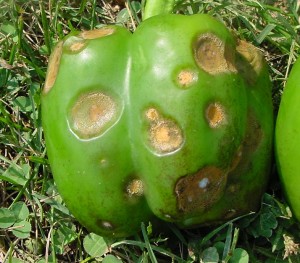Grape berry moth is one of the key direct pests of grapes in NJ. Females lay their eggs on the berry and the larvae makes a small entry hole and then feeds inside the berry. Webbing may be observed as the larvae move between berries.
A threshold of 10% webbing has been used in NY grapes.The MSU model predicted degree-day timing for Intrepid or Altacor applications against grape berry moth to be last Thursday in South Jersey (Bridgeton).
Due to the storm and the rains last week, applications may have reduced efficacy or were not able to be applied. If you have a history of grape berry moth pressure, today would be the tail end of timing for conventional materials. These include pyrethroids, like Bifenture or Danitol, or Imidan. Please read the label carefully as Imidan has a long re-entry interval. Also as a reminder, phytoxocitiy has been observed with using “EC” formulations of insecticides, such as Danitol, with Captan.

